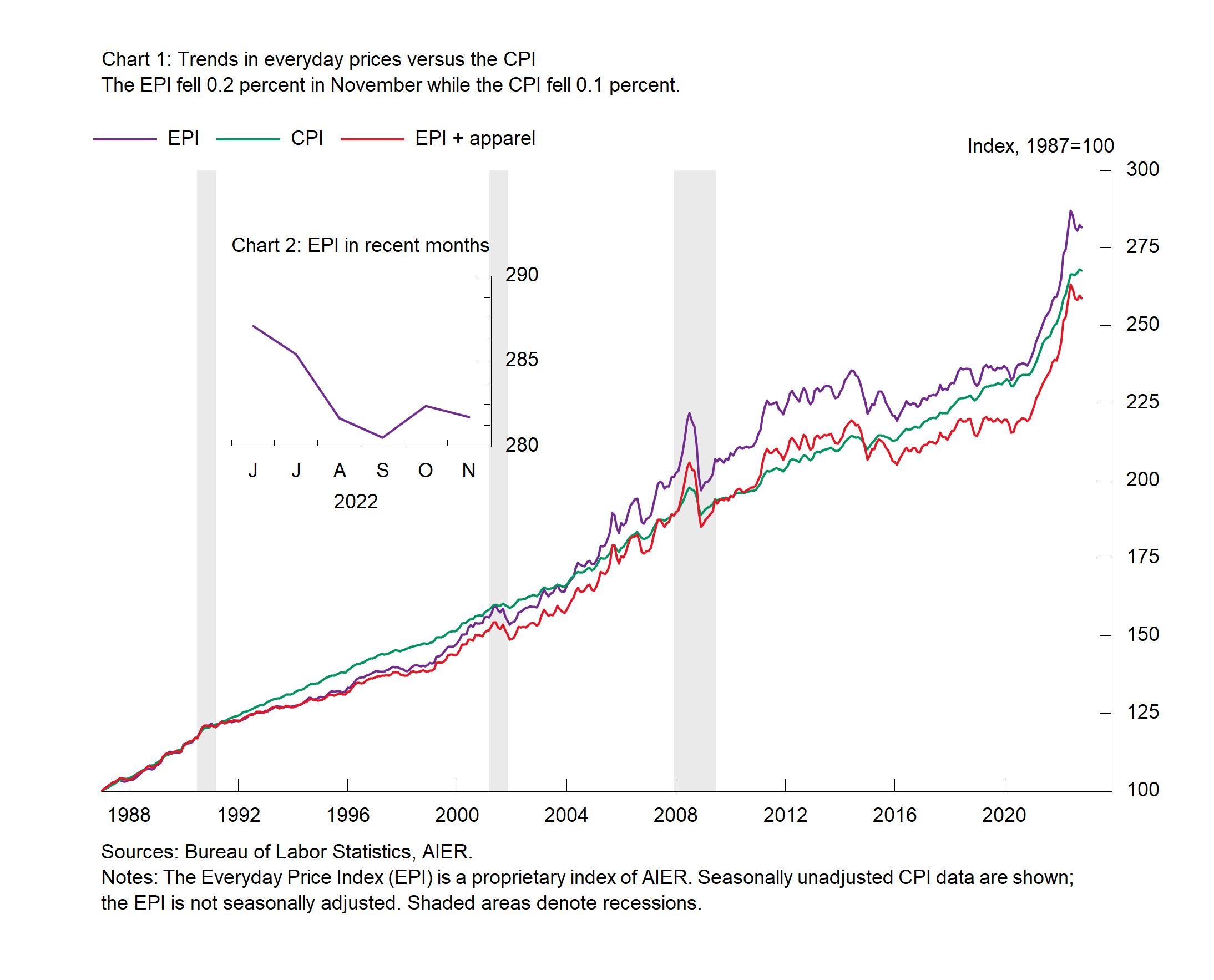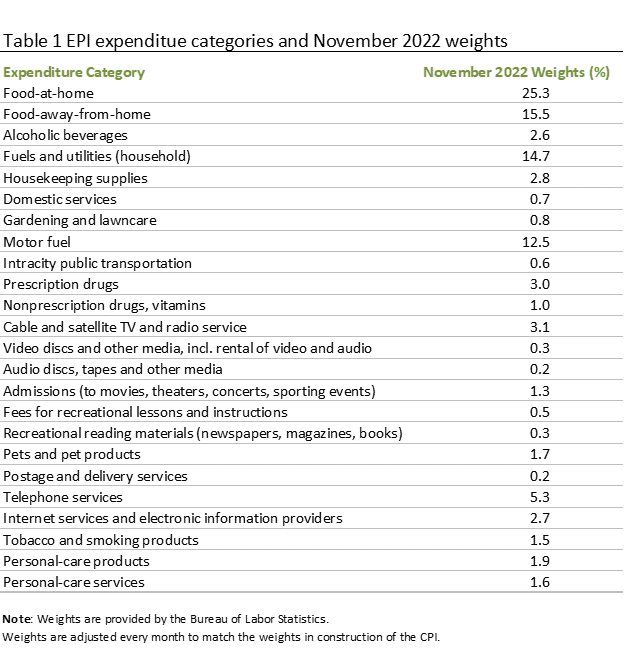AIER’s Everyday Price fell 0.2 percent in November following a rise of 0.7 percent in October and declines of 0.4 percent in September, 1.3 percent in August, and 0.6 percent in July. The Everyday Price Index is up 8.7 percent from a year ago, the slowest since October 2021. Telephone services and food away from home were the top contributors to the rise in November, while motor fuel and home fuels and utilities had the largest negative contributions.
Motor fuel prices, which are often a significant driver of the monthly changes in the Everyday Price index because of the large weighting in the index and the volatility of the underlying commodity, fell 3.5 percent for the month, subtracting 43 basis points. Household fuels and utilities prices fell 1.0 percent for the month, subtracting 14 basis points.
Telephone services prices jumped 2.1 percent in November, adding 11 basis points while food away from home saw a 0.5 percent rise in prices, adding 8 basis points. A total of 15 categories had price increases versus 8 showing decreases.
The Everyday Price Index, including apparel, a broader measure that includes clothing and shoes, fell 0.4 percent in November, also the fourth decline in the last five months. Over the past year, the Everyday Price Index, including apparel, is up 8.4 percent, the lowest since October 2021.
Apparel prices fell 2.1 percent on a not-seasonally-adjusted basis in November. Apparel prices tend to be volatile on a month-to-month basis. From a year ago, apparel prices are up 3.6 percent.
The Consumer Price Index, which includes everyday purchases and infrequently purchased, big-ticket items and contractually fixed items, fell 0.1 percent on a not-seasonally-adjusted basis in November. Within the CPI, energy posted a 2.5 percent drop on a not-seasonally-adjusted basis while food had a 0.2 percent increase. Over the past year, the Consumer Price Index is up 7.1 percent.
The Consumer Price Index, excluding food and energy, rose 0.1 percent for the month (not seasonally adjusted) while the 12-month change came in at 6.0 percent and the three-month annualized rate came in at 4.3 percent, the slowest since October 2021. The 12-month change in the core CPI was just 1.3 percent in February 2021 and 2.3 percent in January 2020, before the pandemic.
After seasonal adjustment, the CPI rose 0.1 percent in November while the core increased 0.2 percent for the month. Over the last three months, the CPI is up at a much slower 3.7 percent annualized pace while the core is up at a 4.3 percent pace.
Within the core, core goods prices fell 0.5 percent in November, the third decline in the last four months, putting the three-month annualized rate of change at -3.5 percent. Core goods prices were up 3.7 percent from a year ago. Within core goods prices, new vehicles prices were unchanged for the month while used car and truck prices fell 2.9 percent, the fifth consecutive monthly decline, leaving prices 3.3 percent below their year-ago level. Recreation commodities fell 0.4 percent for the month leaving the 12-month gain at 3.6 percent while technology commodities fell 1.8 percent in November putting the 12-month change at -11.5 percent. On the upside, household furnishings and supplies prices rose 0.4 percent for the month with the 12-month gain at 8.3 percent.
Core services prices were up 0.4 percent for the month and 6.8 percent from a year ago. Among core services, gainers include shelter, which accounts for 32.7 percent of the CPI, up 0.6 percent for the month. The shelter index increased 7.1 percent over the last year, accounting for half of the total increase in all items less food and energy.
Other core services components that rose in November were the index for motor vehicle insurance (up 0.9 percent), recreation (up 1.0 percent), tuition and childcare (+0.3 percent), telephone services (+2.1 percent), and personal care services (+1.4 percent). On the downside, index for airline fares fell 3.0 percent in November, the medical care index fell 0.7 percent, and car and truck rentals fell 2.4 percent.
The rate of price increases for many goods and services in the economy remain elevated though recent data suggest a significant deceleration in many areas. Still, sustained elevated price increases are likely distorting economic activity by influencing consumer and business decisions. Furthermore, price pressures have resulted in an aggressive Fed tightening cycle, raising the risk of a policy mistake. The fallout surrounding the Russian invasion of Ukraine continues to disrupt global supply chains while labor shortages and turnover continue to challenge businesses. All of these are sustaining a high level of uncertainty for the economic outlook. Caution is warranted.




